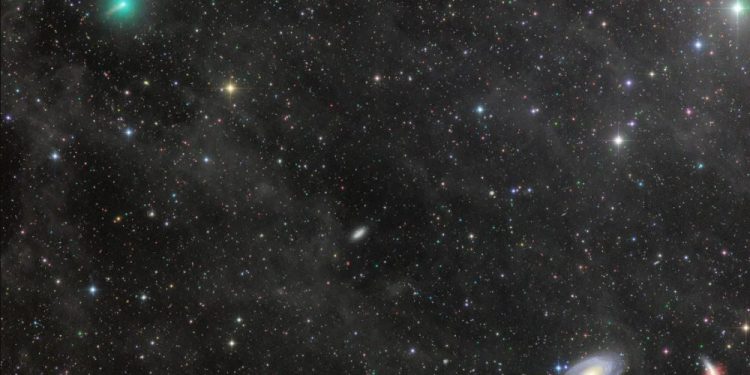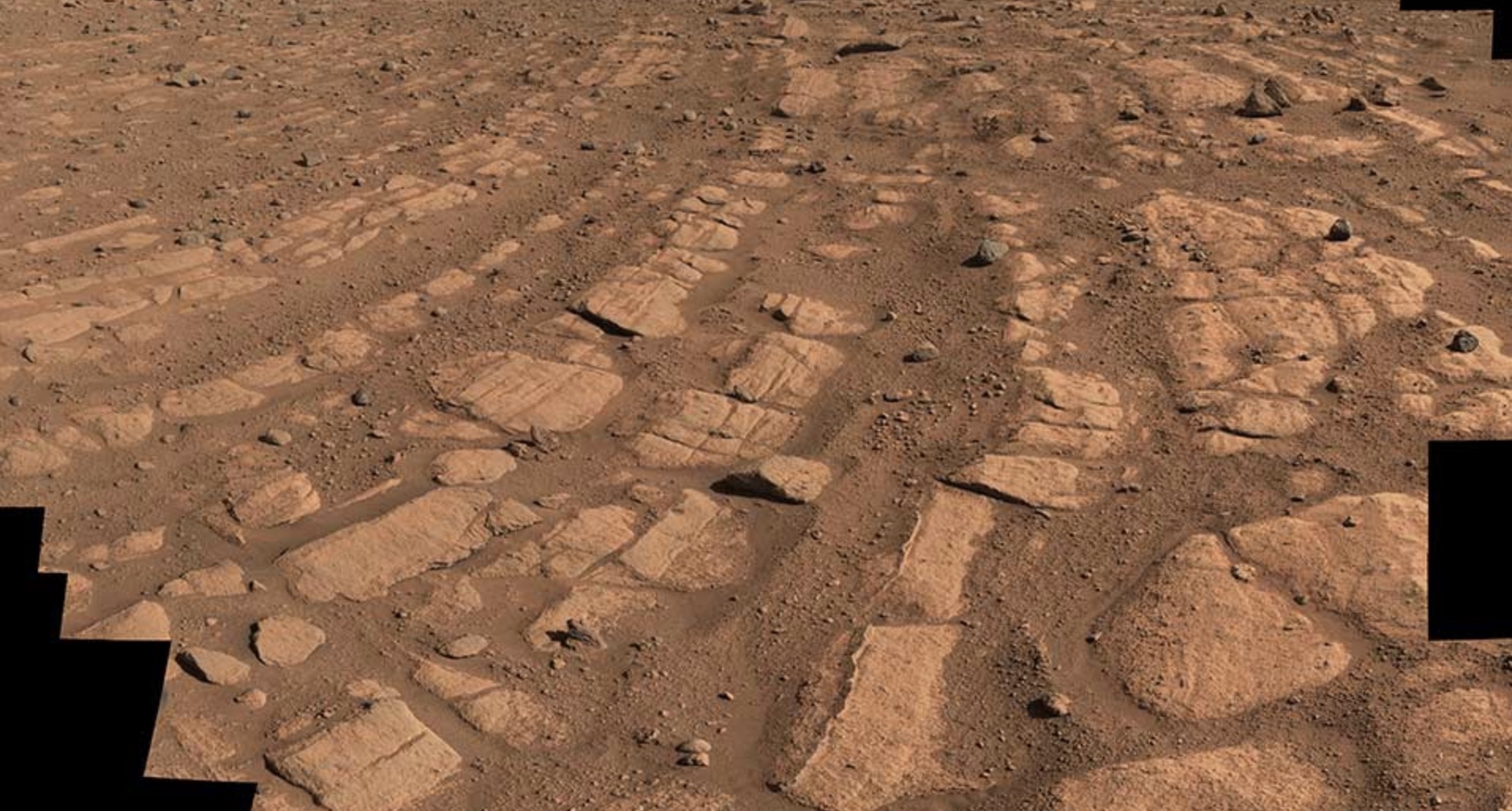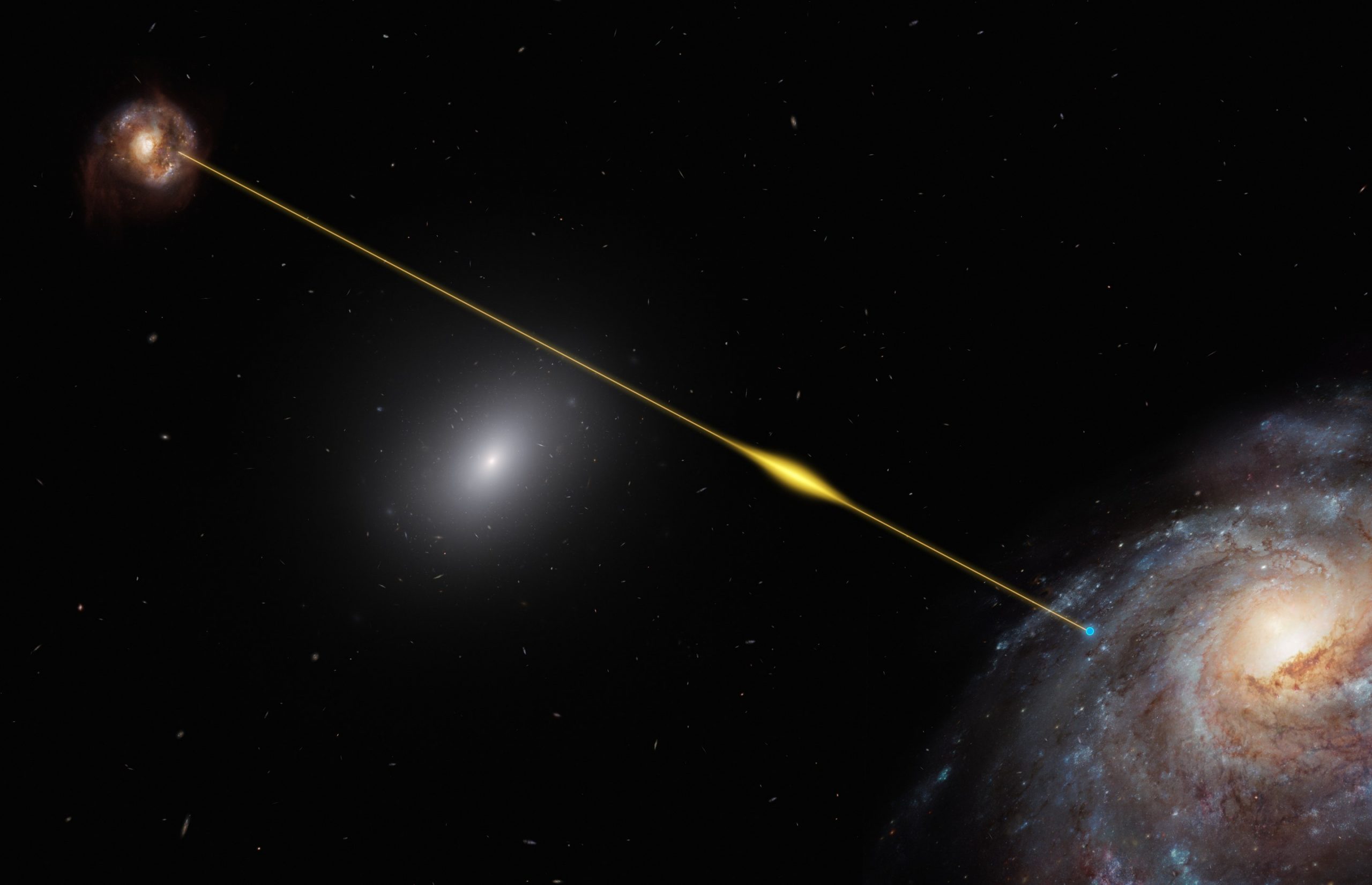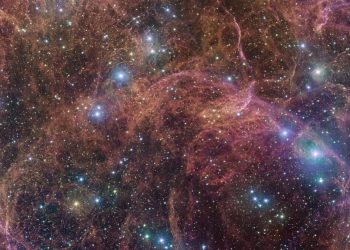An international team of scientists has made an extraordinary leap in our understanding of the universe by revealing the precise locations of more than 1 million galaxies. The Physics of the Accelerating Universe Survey (PAUS), a collaboration involving 14 institutions, covered an expansive region of the sky, equivalent to the size of around 250 full moons. The project has offered unprecedented insights into the structure and evolution of the universe by using innovative technology and cutting-edge techniques to measure galaxy distances with remarkable precision.
At the core of this achievement lies the PAUCam, a specialized camera mounted on the 4.2-meter William Herschel Telescope (WHT) in La Palma, Spain. With the help of this instrument, astronomers were able to determine the distances of galaxies located over 10 billion light years away. This breakthrough marks a significant step forward in understanding the cosmos, particularly as it relates to galaxies that lie at the farthest reaches of the known universe.
When it comes to observing galaxies, astronomers typically rely on two types of surveys: photometric and spectroscopic. Photometric surveys capture detailed images of all detectable objects in the sky, while spectroscopic surveys focus on specific light sources to gather information about the wavelengths they emit. While photometric surveys can detect more objects, spectroscopic surveys provide richer, more detailed data for each galaxy observed.
PAUS offers a revolutionary combination of both methods, providing high-quality images while also delivering valuable spectroscopic data. As Professor Benjamin Joachimi from University College London’s Department of Physics & Astronomy explained, the PAUCam uses narrow wavelength filters to collect light from specific parts of the spectrum, allowing researchers to reconstruct low-resolution versions of each galaxy’s spectrum. This novel approach provides a more comprehensive view of galaxies and how they interact with their environments—particularly the dark matter that surrounds them.
Understanding the Expanding Universe
The PAUS catalog holds tremendous potential for astronomers aiming to create more accurate maps of the universe. It allows scientists to explore how galaxies connect with dark matter and dark energy—the invisible forces that shape the cosmos. Dark energy, believed to account for approximately 70% of the universe, is the primary driver of the universe’s accelerating expansion, yet its true nature remains largely unknown. The precise data collected by PAUS will enable further exploration into these enigmatic forces.
In addition to providing a wealth of data, the PAUS team’s efforts have resulted in groundbreaking publications, including studies on galaxy distance measurements and calibration techniques.
Nine years after the first light, the PAUS team is continuing to use its data to refine and enhance the calibration of existing cosmological surveys. For instance, PAUS is helping improve the accuracy of weak lensing analyses and simulations for upcoming dark energy missions, such as the European Space Agency’s Euclid mission. The data is also contributing to the Rubin Observatory’s Legacy Survey of Space and Time (LSST), which will further expand our understanding of the universe.
As David Navarro-Gironés, a Ph.D. student at ICE-CSIC and first author of a paper on PAUS, notes, the precision of the survey is one of its greatest strengths. “The ability to measure galaxy distances with such high accuracy is vital for understanding the large-scale structure of the universe,” he says.
With over 1 million galaxies mapped in unprecedented detail, the PAUS survey is paving the way for future discoveries in cosmology, offering a clearer view of the cosmos than ever before.











